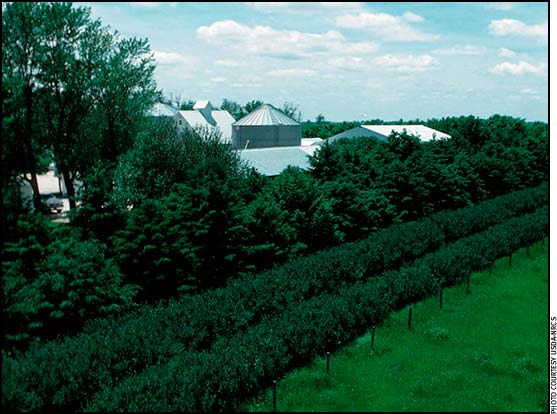Consider Windbreaks to Shelter Livestock
Windbreaks can reduce feed costs, help cattle maintain weight.
Established tree windbreaks sheltering beef and dairy cattle operations can save producers money on feed costs, weight loss and milk production during the winter months.
“A properly designed windbreak will reduce these needs by half.”
— Bob Atchison
A heavy winter coat protects beef cattle until temperatures drop below 18° F, but beyond that point, Bob Atchison with the Kansas Forest Service said the animals require additional feed to maintain body temperatures. The presence of a windbreak can help remedy this problem.
“A 25 mile-per-hour wind at 0° Fahrenheit creates a wind chill of 44° below zero,” said Atchison. “By contrast, a properly designed windbreak will reduce the same wind chill to 15° below zero.”
Atchison said windbreaks can reduce the spike in energy requirements cattle need to maintain their body temperature during extreme cold weather. He cited Canadian researchers who found that cattle on winter range, in unprotected sites, required a 50% increase in feed for normal activities.
“A properly designed windbreak will reduce these needs by half,” he said.
Windbreaks enable cattle to gain and maintain weight better, as well. He cited studies in Montana indicating that during mild winters, beef cattle sheltered by windbreaks gained an average of 34 to 35 pounds (lb.) more than cattle in an open feedlot. During severe winters, cattle in feedlots protected from the wind maintained 10.6 lb. more than cattle in unprotected lots.
Editor’s Note: This article is provided by K-State Research and Extension.












